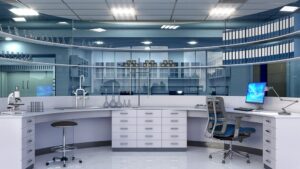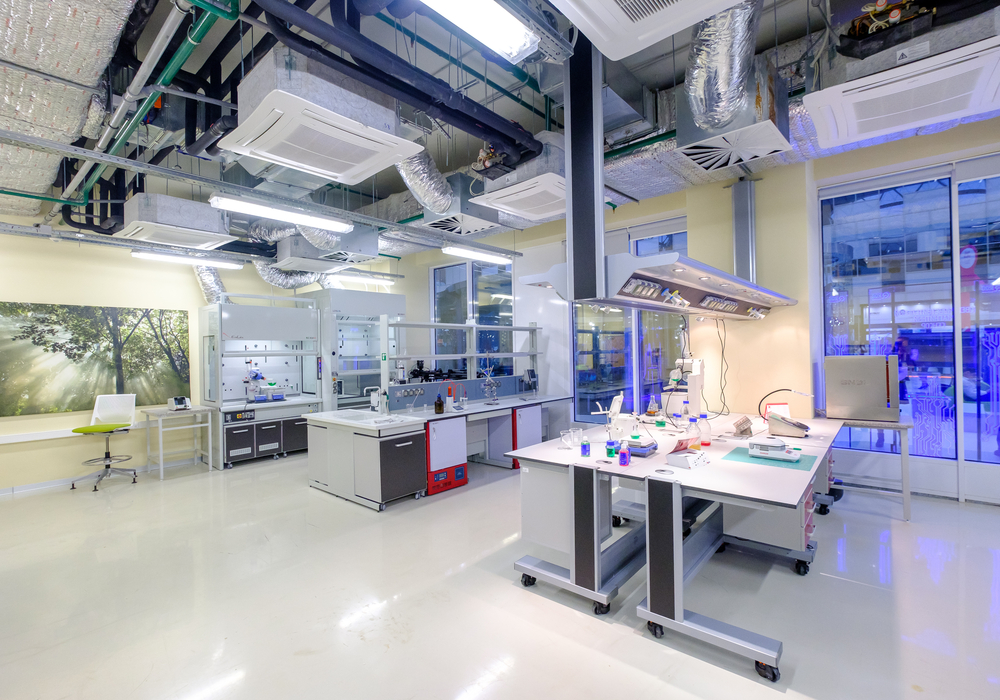
In the ever-evolving landscape of scientific research, the need for adaptable and efficient laboratory environments has never been more critical. Modular laboratory systems have emerged as a game-changer, offering unparalleled flexibility to meet the dynamic needs of research in modern laboratories.
These systems are designed to be easily reconfigured, expanded, and customized, enabling researchers to swiftly adapt their workspaces to new projects, technologies, and team requirements.
This article explores the key benefits of modular lab systems, the types of modular furniture and casework available, and essential considerations when selecting a provider, highlighting why these systems are the ideal solution for today’s dynamic research demands.
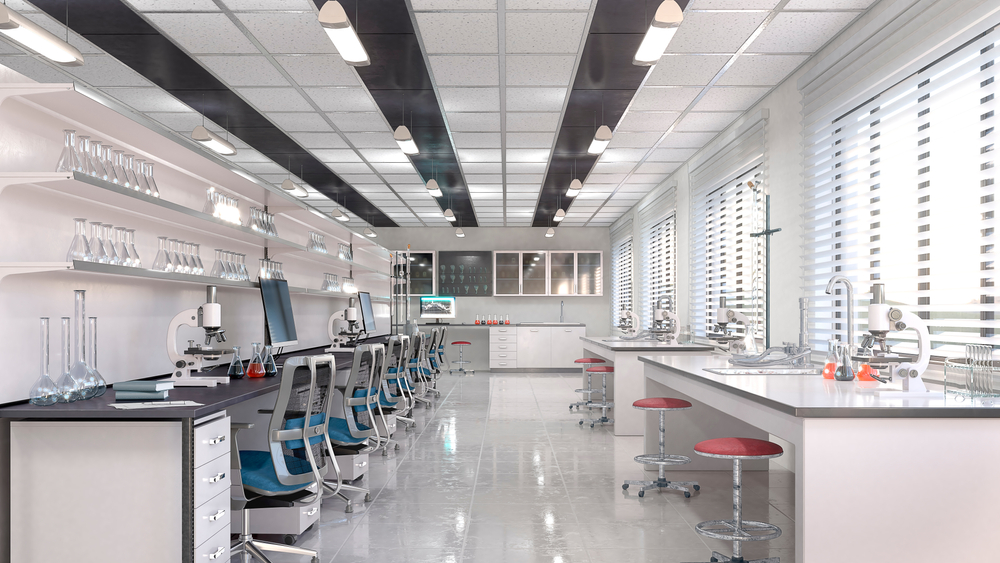
Modular Laboratory Systems
Modular laboratory systems refer to flexible, pre-fabricated components and units designed for easy assembly, reconfiguration, and expansion in a laboratory setting.
These systems typically include elements like lab benches, storage units, fume hoods, and other workstations that can be quickly and efficiently rearranged or added to meet the changing needs of the lab, whether for teamwork or individuals.
This approach allows for cost-effective, scalable, and customizable solutions, with adaptability to the evolving research requirements and technological advancements.
Modular Laboratory Systems for More Flexibility
Modular laboratory systems create more flexibility for dynamic research through several key features:
— Reconfigurability
Modular lab components can be easily moved, rearranged, or replaced, allowing laboratories to adapt quickly to new experiments or changes in research focus without significant downtime or cost. Furthermore, individual modules can be taken out for maintenance and repair without affecting the lab’s workflow.
— Scalability
As research projects grow or change, modular systems can be expanded or reduced in size, making it easier to accommodate individuals or different team sizes, equipment, and project scopes.
— Customization
Modular systems can be tailored to meet specific research needs, allowing for specialized workstations, storage solutions, and equipment setups that support various types of research activities in various lab spaces.
— Upgradability
With modular systems, new technologies and equipment can be integrated seamlessly, ensuring that laboratory spaces stay current with scientific advancements without requiring a complete overhaul.
— Cost-Effectiveness
By using pre-fabricated, standardized components, modular systems reduce the time and expense associated with traditional lab construction and renovation, providing a more economical solution for adapting to changing research needs. Furthermore, modular laboratory units allow upgrading or expansion to be done in stages to spread the costs over a longer period.
— Mobility
Many modular components are designed to be portable, enabling researchers to reconfigure the lab layout quickly and easily in response to immediate project requirements.
Overall, modular lab systems provide a versatile, efficient, and future-proof solution that supports the dynamic nature of modern research environments.
Additional Reading: Biology Lab Benches: Combining Durability with Flexibility
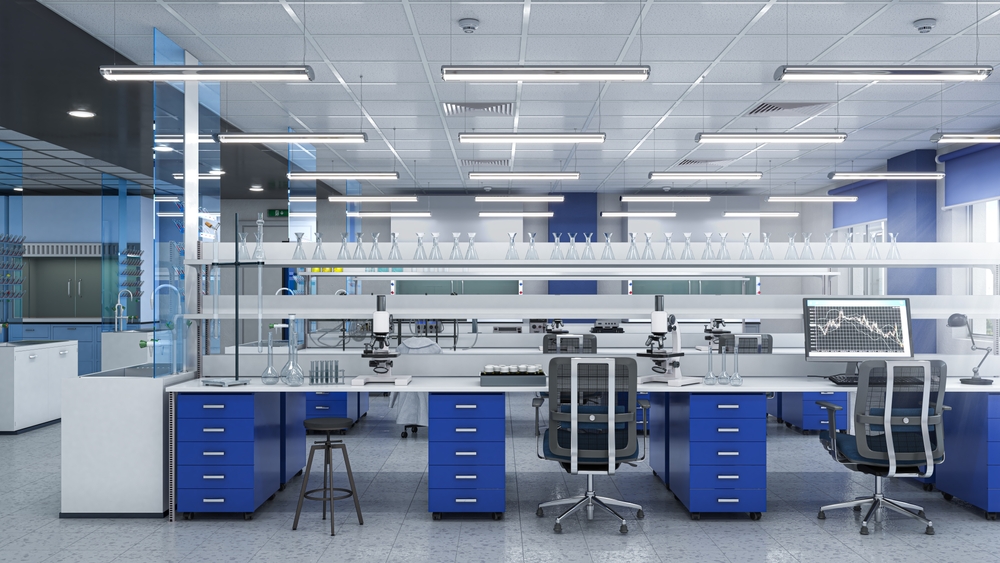
Types of Modular Laboratory Furniture
For research labs, several types of modular furniture and casework are recommended to enhance flexibility, efficiency, and functionality:
1. Workbenches
- Adjustable-Height Workbenches: Allow for ergonomic adjustments to suit different tasks and users.
- Mobile Workbenches: Equipped with wheels for easy movement and reconfiguration within the lab.
2. Storage Solutions
- Modular Shelving Units: Customizable shelves that can be adjusted in height and configuration to store various lab supplies and equipment.
- Mobile Storage Carts: Portable units that can be moved around the lab as required, often featuring drawers and shelves for organizing tools and materials.
3. Casework
- Steel and Powder-Coated Cabinets: Durable and resistant to chemicals, these cabinets are ideal for storing hazardous materials and heavy equipment.
- Phenolic Resin Casework: Resistant to moisture, chemicals, and heat, suitable for environments with harsh conditions.
- Laminate Casework: Provides a cost-effective option for general storage requirements with customizable finishes.
4. Fume Hoods and Ventilation Units
- Mobile Fume Hoods: Can be relocated to different areas of the lab as needed.
- Modular Biosafety Cabinets: Offer flexibility for different levels of containment and can be integrated into various lab setups.
5. Lab Tables
- Modular Lab Tables: Can be configured in different shapes and sizes to fit specific lab requirements, often featuring interchangeable tops for different types of work.
- Anti-Vibration Tables: Designed for use with sensitive equipment to minimize disturbances from external vibrations.
6. Seating
- Ergonomic Lab Chairs and Stools: Adjustable and designed for comfort during long periods of work, often with wheels for mobility.
7. Utility Carts
- Modular Utility Carts: Versatile carts that can be outfitted with various accessories like power strips, storage bins, and shelves for transporting equipment and supplies around the lab.
8. Lab Islands
- Central Lab Islands: Provide a large workspace with access from multiple sides, often featuring integrated sinks, gas, and electrical outlets.
These modular furniture and casework options are designed to meet the diverse and evolving needs of research labs.
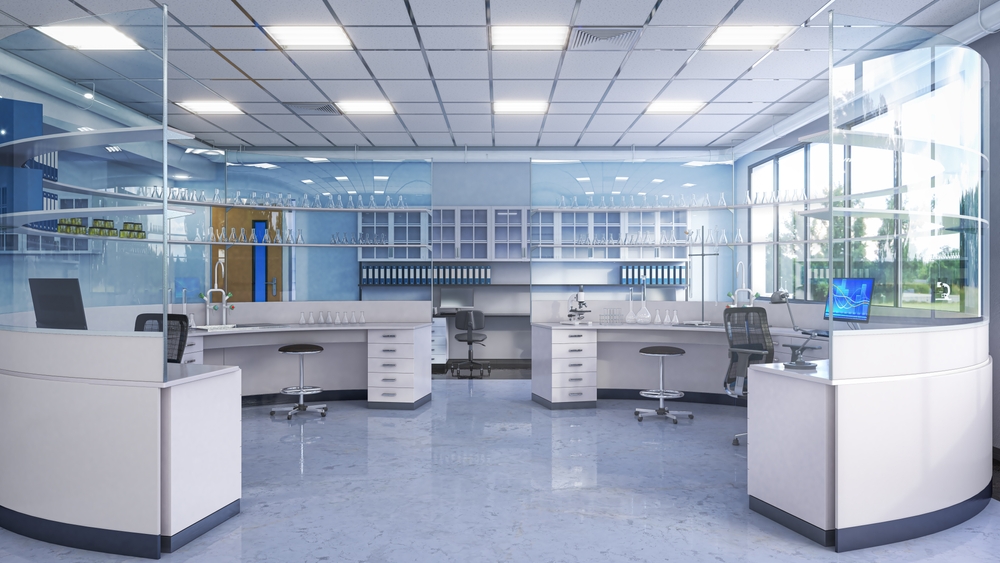
Considerations for Modular Laboratory Systems
While not losing sight of modern lab design trends and all the latest innovations, certain basic aspects must be considered. When planning modular systems for flexibility in a research lab, consider the following:
Space Utilization
— Layout: Ensure the lab layout allows for easy movement and reconfiguration of modular components.
— Zoning: Designate specific areas for different activities (e.g., wet labs, dry labs, storage) for optimization of workflow and to reduce cross-contamination. Include planning for collaboration areas to promote an idea-sharing culture.
Scalability
— Future Expansion: Plan for potential growth by incorporating modular elements that can be easily expanded or reduced.
— Phased Implementation: Consider implementing modular systems in phases to allow for gradual upgrades and adjustments.
Ergonomics and Accessibility
— Adjustable Furniture: Researchers and lab personnel spend long hours working, and their well-being is essential. Use adjustable workbenches and chairs with ergonomic designs to accommodate various tasks and user preferences.
— Universal Design: Ensure that all lab components are accessible to all users, including those with disabilities.
Interchangeability
— Standardized Components: Use modular components that can be easily swapped or replaced without significant modifications.
— Compatibility: Ensure compatibility between different modular systems and equipment to facilitate seamless integration.
Mobility
— Portable Units: Incorporate mobile workbenches, storage carts, and equipment stands to allow for quick reconfiguration.
— Flexible Connections: Use flexible gas, electrical, and data connections to support the mobility of lab components.
Durability and Maintenance
— Quality Materials: Choose durable materials, easy to clean, and resistant to chemicals and wear.
— Maintenance Access: Design modular systems with easy access for maintenance and repairs.
Utility Integration
— Utility Distribution: Plan for efficient distribution of utilities (e.g., power, gas, water) with quick-connect systems and flexible conduits.
— Future-Proofing: Ensure that the infrastructure can support future technology and equipment upgrades.
Safety and Compliance
— Regulatory Standards: Ensure all modular systems meet relevant safety and regulatory standards, such as SEFA standards and OSHA regulations.
— Safety Features: Incorporate safety features such as fume hoods, eyewash stations, and emergency shut-offs.
Aesthetics and Environment
— Design: Consider the overall aesthetic of the lab to create an inviting and professional environment.
— Lighting and Ventilation: Ensure adequate lighting and ventilation to support a healthy and productive workspace.
Sustainability
— Energy Efficiency: Modular units made of environmentally friendly materials and structured for energy efficiency are sustainable.
— Waste Reduction: Limiting the environmental impact of waste-reduction systems is critical in maintaining sustainable functionality.
Cost-Effectiveness
— Budget Planning: Balance the initial investment with long-term benefits, such as reduced downtime and increased efficiency, yielding cost savings.
— Value Engineering: Optimize the design to achieve the best value without compromising quality and functionality.
By considering these aspects, you can design a research lab with modular systems that provide the flexibility needed to adapt to evolving research demands and technologies.
Additional Reading: The Furniture Lab: Merging Design with Functionality in Laboratory Spaces
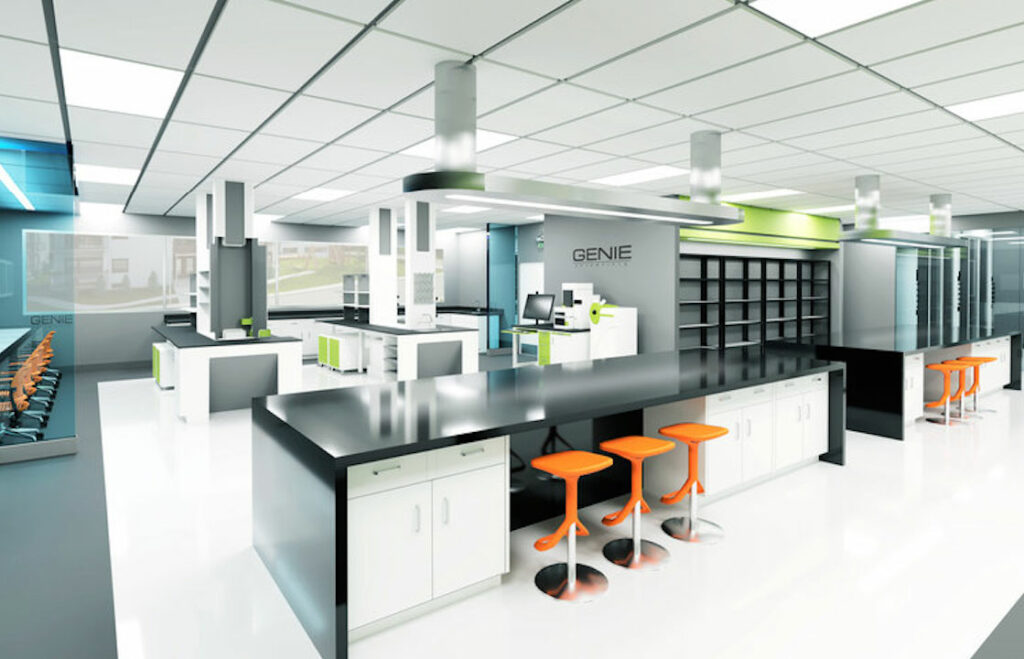
Choosing a Provider of Modular Laboratory Systems
When choosing a provider of modular research lab systems, several important factors should be considered to ensure that the provider can meet your specific needs and deliver high-quality solutions:
Experience and Reputation
- Track Record: Look for providers with a proven track record in designing and installing modular lab systems.
- References and Reviews: Check references and read reviews from other clients to gauge the provider’s reliability and quality of service.
Customization and Flexibility
- Tailored Solutions: Ensure the provider offers customizable solutions to fit your specific lab requirements and layout.
- Modularity: Confirm that their systems are truly modular and can be easily reconfigured, expanded, or upgraded as needed.
Quality of Materials
- Durability: Assess the quality and durability of the materials used in their modular systems to ensure they can withstand the demands of your research environment.
- Chemical Resistance: Ensure materials are resistant to chemicals, moisture, and other lab hazards.
Compliance and Standards
- Regulatory Compliance: Verify that the provider’s systems comply with relevant safety standards, health, and environmental regulations, such as requirements set forth by the Occupational Safety and Health Administration (OSHA), guaranteeing a safe working environment by adhering to federal safety regulations.
- Industry Standards: Ensure the provider is a member of the Scientific Equipment and Furniture Association (SEFA), as this affiliation signifies a commitment to high industry standards and best practices.
Technical Support and Services
- Installation Services: Check if the provider offers professional installation services to ensure proper setup and integration of modular systems.
- Ongoing Support: Look for providers that offer ongoing technical support, maintenance, and repair services.
Laboratory Design Expertise
- Lab Design Assistance: Choose a provider with expertise in modular lab design for flexible solutions who can assist in optimizing the layout and functionality of your lab.
- Consultation Services: Availability of consultation services to understand your specific needs and provide tailored recommendations for the perfect lab furniture solutions.
Product Range
- Comprehensive Offerings: Select a provider with a wide range of modular lab furniture, including workbenches, storage units, fume hoods, and specialized equipment.
- Integration Capabilities: Ensure their products can integrate seamlessly with existing lab infrastructure and equipment.
Cost and Budget
- Competitive Pricing: Compare pricing among providers to ensure you get the best value for your investment.
- Total Cost of Ownership: Consider the long-term costs, including maintenance, repairs, and potential upgrades.
Lead Times and Availability
- Delivery Times: Check the provider’s lead times for delivery and installation to ensure they can meet your project timeline.
- Stock Availability: Ensure they have adequate stock levels to avoid delays in your project.
Sustainability
- Environmental Practices: Choose providers that prioritize sustainability and use eco-friendly materials and processes.
- Energy Efficiency: Consider providers whose products contribute to energy efficiency in the lab.
User-Friendly Design
- Ergonomics: Ensure their systems are designed with ergonomics in mind to promote a safe and comfortable working environment.
- Ease of Use: Systems should be intuitive and easy to reconfigure or adjust as needed.
Innovative Solutions
- Technology Integration: Look for providers that offer advanced technology integration, such as smart lab systems and IoT connectivity.
- Innovation: Providers should be at the forefront of innovation, offering the latest in modular lab design and functionality.
By carefully evaluating these factors, you can choose a provider of modular research lab systems that will deliver high-quality, flexible, and cost-effective solutions to meet your lab’s evolving needs.
Conclusion
Modular laboratory systems provide a versatile and future-proof solution that aligns with the fast-paced and ever-changing nature of modern scientific research.
By offering reconfigurability, scalability, and customization, these systems ensure that research labs can quickly adapt to new challenges and opportunities.
When selecting a provider, it’s crucial to consider factors such as experience, material quality, compliance, and support services to ensure you invest in a solution that meets your specific needs.
With the right modular lab systems in place, research facilities can maintain high levels of efficiency, safety, and innovation, ultimately driving scientific progress and discovery.




